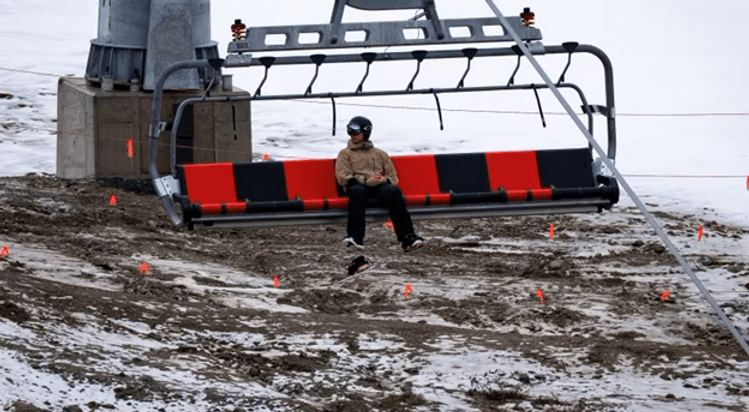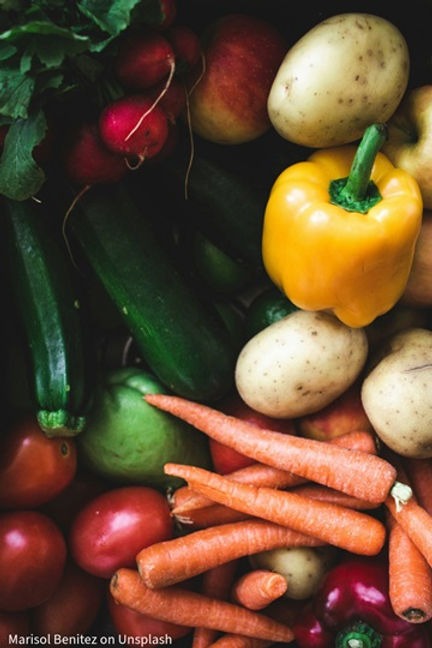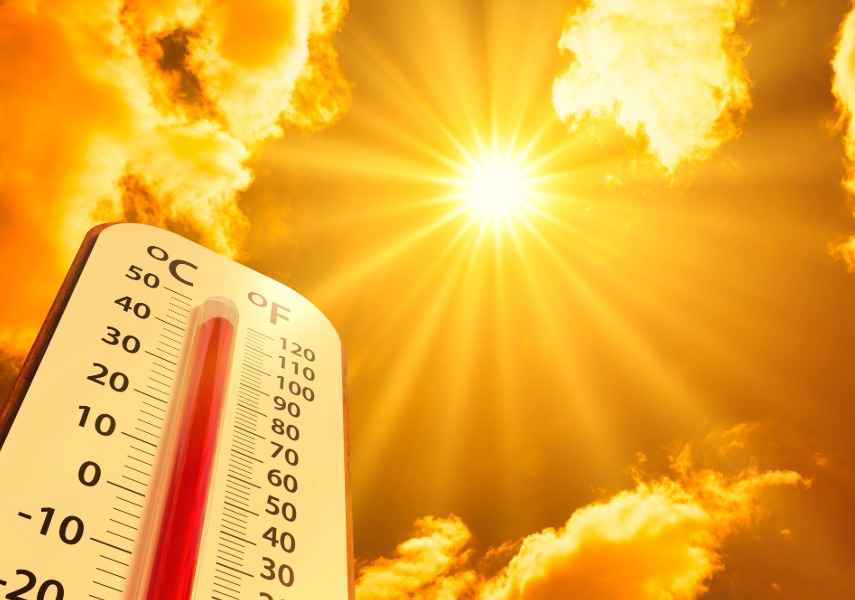Short-term heating, climate grief and finding agency in your plate
As I am writing this end of January 2024, I am in Whistler, BC which is known for its incredible natural beauty with endless opportunities for outside adventures regardless of the season. The winters are especially known for inhabiting one of the largest ski resorts in the world, and January is considered the best month. As “EpicRides” puts it:
So why am I not out there howling with the other powder hounds? Because combined with lots of rain and temperatures well into the pluses, the slopes look like it is end of season already and the powder is nowhere to be seen. This is in stark contrast to just 2 weeks ago when the opposite records were hit with the coldest day temperature recorded since 1976 of -19C – a phenomenon often referred to as “weather whiplash”.

- Food production is a significant contributor to climate change, accounting for nearly a quarter of global greenhouse gas (GHG) emissions. Some foods generate more greenhouse gas than others: food from animals make up two-thirds of all agricultural GHG emissions and use more than three-quarters of agricultural land. Plant-based foods generally have a much lower environmental impact.
- Enjoying more plant-based foods is an important way to reduce pressure on the climate. But changing people’s behavior requires more than information. It also requires more available options that consumers will want to pick.
- Our work with shifting to climate- friendly diets is two-fold, making more options available and shifting behaviors so that more consumers pick those options.
- WRI works with restaurants, universities, hospitals and more to create dining environments that enable consumers to choose climate-friendly foods.
- Using cutting-edge learnings from behavioral science, WRI works with the food service sector to make changes within their operations that encourage diners to choose more sustainable, plant-rich options.
It is difficult not to sit with an eery feeling that this is just a taste of what is to come: Erratic swings in temperature, the unpredictability and instability of our weather AND rising temperatures overall. It begs the question of what is going on here!?
While there are some uncertainties on the details of what is causing what, there is no doubt that human-caused emissions play an instrumental role in the “weirding weather” and rising temperatures. Most of us are aware of the role CO2 emissions play. In addition, methane, a short-term gas, is speeding up the heating simply because it is 120 times more potent than CO2 when first released into the atmosphere. And although methane itself quickly dissipates, the importance of it does not as the outpouring of this potent gas is continuous and, currently, is only growing.
At the same time, regulations introduced in 2020 to encourage cleaner shipping fuels have reduced global emissions of sulphur dioxide (SO2) by an estimated 10%. This should be good news as SO2 is a harmful air pollutant to breathe. The bad news is that there are unintended consequences in the shape of warming. This is because small airborne particles (aerosols like sulphate or dust) tend to reflect some of the sun’s energy back into space which makes for a cooling effect. But when we reduce aerosols, we also remove the cooling reflector effect they have. And because the 10% global reduction of SO2 has happened over the oceans the effect of what may seem like a small reduction is quite large. In a recent podcast, Simon Leon, climate researcher and co-author of a new article published in the research journal “Oxford Open Climate Change” says:
70% of the earth’s surface is oceans, but 90% of the global heat uptake is by the oceans. So the ocean is 90% of the heat from global warming. So global warming is mainly ocean warming. And then if you reduce the aerosols over the oceans with 80%, the effect is expected to be much stronger than if you would do the same over land, because the oceans are dark, they have a dark surface, because there’s no other aerosols to compete with. And because there’s more clouds over the ocean and because they take up much of the heat, if the sun is shining on the oceans, it’s not just heating the first centimeter or the first layer of the surface like when the sun is shining on the land. The land absorbs the surface. The first centimeter of the land absorbs the heat from the sun and it radiates it back as heat to space. But if the sun is shining on the water, the radiation of the sun, it enters the water into a depth of about 40 meters. Some of the radiation even deeper. So that’s also important to understand, that this all contributes to the effect of changes of aerosols over the oceans to be much stronger than if you would do a globally average reduction of this effect.
If Leon and his co-authors are right (co-authors count Jamen Hansen, former director of the NASA Goddard Institute and now an adjunct professor at Columbia University), we are in for quite a temperature spike. According to the article, it seems plausible that we will hit 1.5°C in 2024 and 2°C within the next two decades (). This may not seem like a big deal as many of us hardly notice that little of a temperature difference – whether it is 12°C or 14°C doesn’t matter much when deciding whether to bring a sweater or not. But when it comes to the climate system it matters a whole lot as extremes exacerbate with every incremental change.
According to the U.N. climate science panel (the Intergovernmental Panel on Climate Change or IPCC), with a warming of 1.5°C, heatwaves that occurred once per decade would increase to 4.1 times a decade, and 5.6 times at 2°C. The warmer atmosphere produces more extreme rainfall which can lead to floods. At the same time, it increases evaporation, leading to more intense droughts. For sea level rise there is also a big difference between 1.5°C and 2°C. At 1.5°C we stand a chance of preventing the collapse of most of the Greenland and west Antarctic ice sheet although it will still lead to a sea level rise of a few feet by the end of the century. But past 2°C, the risk of the ice sheets collapsing is significantly higher with sea levels rising up to 10 metres or about 30 feet over time.
Food systems would be heavily impacted as crops and livestock cannot withstand the heat. And with eroding soil, more droughts and floods, it makes for a dangerous cocktail with little food security. Add to that superstorms forming over the oceans potentially messing with shipping routes, millions of people seeking refuge from extreme heat and failing crops and it makes for a challenging time ahead.
So, what can we do? I, myself have been and still am struggling with this as there are no easy answers or solutions. Terms like “eco-anxiety”, “solastalgia” and “climate grief” are becoming mainstream words as more of us internalize the reality of our predicament. Personally, I have had a really hard time lately coming to terms with just how fast the warming seems to be happening. I am scared for the future of my three children, and I weep for the general decline of our ecosystems and the loss of life that entails.
It has become increasingly difficult for me to reconcile my own lifestyle, where I am privileged to live in a beautiful and safe neighborhood full of single-family homes, 2 cars in the garage, easy access to healthy foods, and my biggest challenge being how to get my kids to their many activities on time as there are three of them and only one of me. Meanwhile, my husband is busy running the hamster wheel ensuring we can pay for it all. We, like most families around where I live, are caught up in our current system. And as the tribal animals we are, we can’t help but compare ourselves to the next family, worrying whether our child will “make the team”, get invited to extended math or whatever else we have decided is important to their future. It is a primal instinct to secure the survival of our kin but somehow doing just that is what perpetuates the very system that got us into trouble.
I honestly thought I was “on the other side”, that I had come to terms with what is and found peace in the work that I do with Common Earth. But taking another round on the roller coaster recently made it clear to me that my grieving is not over and perhaps will be a lifelong companion just like the loss of my mother more than 11 years ago. It has made me reflect on how similar the grief feels.
Gandhi found that constructive program needed a single project that symbolized and gave coherence to the whole, something everyone could take part in, and for his situation the ideal candidate was khadi: the spinning, weaving, and distribution of homespun cloth. There were many reasons for the choice, which I go into in my book, The Search for a Nonviolent Future, but what gave khadi so much power was that it was non-confrontational but subversive: spinning your own cloth was your own perfectly legal business, but it put British manufactures, and the exploitive system built on them, out of business. Khadi also dealt with a basic need, the second item in “food, clothing, and shelter.” And of course it could be locally, indeed individually organized. What would be the equivalent today? After talking this over for years with many audiences, I believe we have come up with a darn good candidate: local food. It’s basic, legal (which you sometimes want), local, healthy—and would put one of the most damaging forms of industrialization, agribusiness, out of business.
I was excited to once again be reminded of the power that our plates hold. We know that basing our diets on the deliciousness of plants reduces our footprint significantly across the board whether we are talking about greenhouse gas emissions, land use, water use, eutrophication, or biodiversity. But most plants today are produced in the industrial food system and although they are less damaging than products from the animal kingdom, buying fruits and vegetables from most supermarket shelves still perpetuates an ecologically destructive food system with its heavy use of pesticides and monocultural ways.
Michael N. Nagler points to the power of supporting local food which has the wonderful side effect of strengthening not only the surrounding community but literally building resilience from the soil up. Remember how we can expect more droughts and heavier rainfalls? Responding to these challenges, we will need to have soils that can withstand these extremes and unfortunately the monocultural practices of industrial agriculture, with its heavy use of pesticides, are not building the resilience we so desperately will need. If you have been through Common Earth Module 2, you’ll know the promise of regenerative agriculture and how its practice centres around building resilience by tapping into the intelligence of nature.
I was excited to once again be reminded of the power that our plates hold. We know that basing our diets on the deliciousness of plants reduces our footprint significantly across the board whether we are talking about greenhouse gas emissions, land use, water use, eutrophication, or biodiversity. But most plants today are produced in the industrial food system and although they are less damaging than products from the animal kingdom, buying fruits and vegetables from most supermarket shelves still perpetuates an ecologically destructive food system with its heavy use of pesticides and monocultural ways.
Michael N. Nagler points to the power of supporting local food which has the wonderful side effect of strengthening not only the surrounding community but literally building resilience from the soil up. Remember how we can expect more droughts and heavier rainfalls? Responding to these challenges, we will need to have soils that can withstand these extremes and unfortunately the monocultural practices of industrial agriculture, with its heavy use of pesticides, are not building the resilience we so desperately will need. If you have been through Common Earth Module 2, you’ll know the promise of regenerative agriculture and how its practice centres around building resilience by tapping into the intelligence of nature.

Last year I had the privilege of buying a weekly vegetable box from a local farm which is part of what is called Community Supported Agriculture (CSA). This is a growing movement around the world that connects producers and consumers within the food system. As a consumer, you take part in the risk of farming by paying upfront for the season, and at the same time investing in your local area’s food security. In addition, the idea is to strengthen a sense of community through local markets where people can connect to each other and their food by meeting the farmers who produced it – whether it is planting vegetables, raising chickens for eggs, animals for meat and dairy products, etc.
Personally, it was an absolute joy to try out new vegetables and figure out how to prepare them either through a quick internet search or using the recipes provided. It was a journey that I look forward to repeating again late this spring as the program starts once again. And while I wait for the fresh veggies, I also found a local place that grows mushrooms which has led to a love affair with ‘Lion’s Mane’ mushroom. If you haven’t heard of them, I highly recommend a quick search online and I promise you’ll find easy and mouthwatering ways to prepare this kind of plants!
Being mindful of where and how we buy our food may seem like a small thing but remember what the American cultural anthropologist, Margaret Mead, said:
All social change comes from the passion of individuals.
Sourcing our food locally from a farm using regenerative methods will not only strengthen the resiliency of the soil but can also help to build a strong community. In addition, studies show that by eating food from a soil rich in nutrients, our microbiome gets healthier as the nutrients of the soil pass through the plants and into our bodies.
Buying more whole and unprocessed foods may mean that we’ll need to take more time in the kitchen – time we may think we don’t have. As a busy mother, I can certainly relate to that. But I am choosing to see it as an invitation to slow down, and I feel that when I make that conscious choice to carve out the time to prepare a meal and to involve the family, it has a positive ripple effect on all of us. It is certainly not every day and perhaps it does not have to be either. Let’s be honest, I still find myself wrapped up in the current system where I barely have time to breathe let alone cook a meal, and then the convenience of takeout is a blessing.
I could go on, but I will leave it at this: it is easy to despair in these uncertain and challenging times. I am there more than I like to admit, and every dip is a reminder of the size of the challenge we are faced with. But it is also a reminder of the potential we all hold to create purpose and meaning, while living in this time of change. It reminds me of the wise words of Joseph Campbell:
Life has no meaning. Each of us has meaning and we bring it to life. It is a waste to be asking the question when you are the answer.
As I slow down, I am reminded that responses will emerge if we let them. But for us to glimpse the steps ahead, we need to walk at a pace that allows us to see what is coming through the mist instead of one that keeps us sprinting towards the ledge. In this terrifying yet glorious and utterly unprecedented time, I choose to slow down and put my faith in the mystery of emergence.
Reach Out
We love talking about what we do and how it can make a difference to you.



